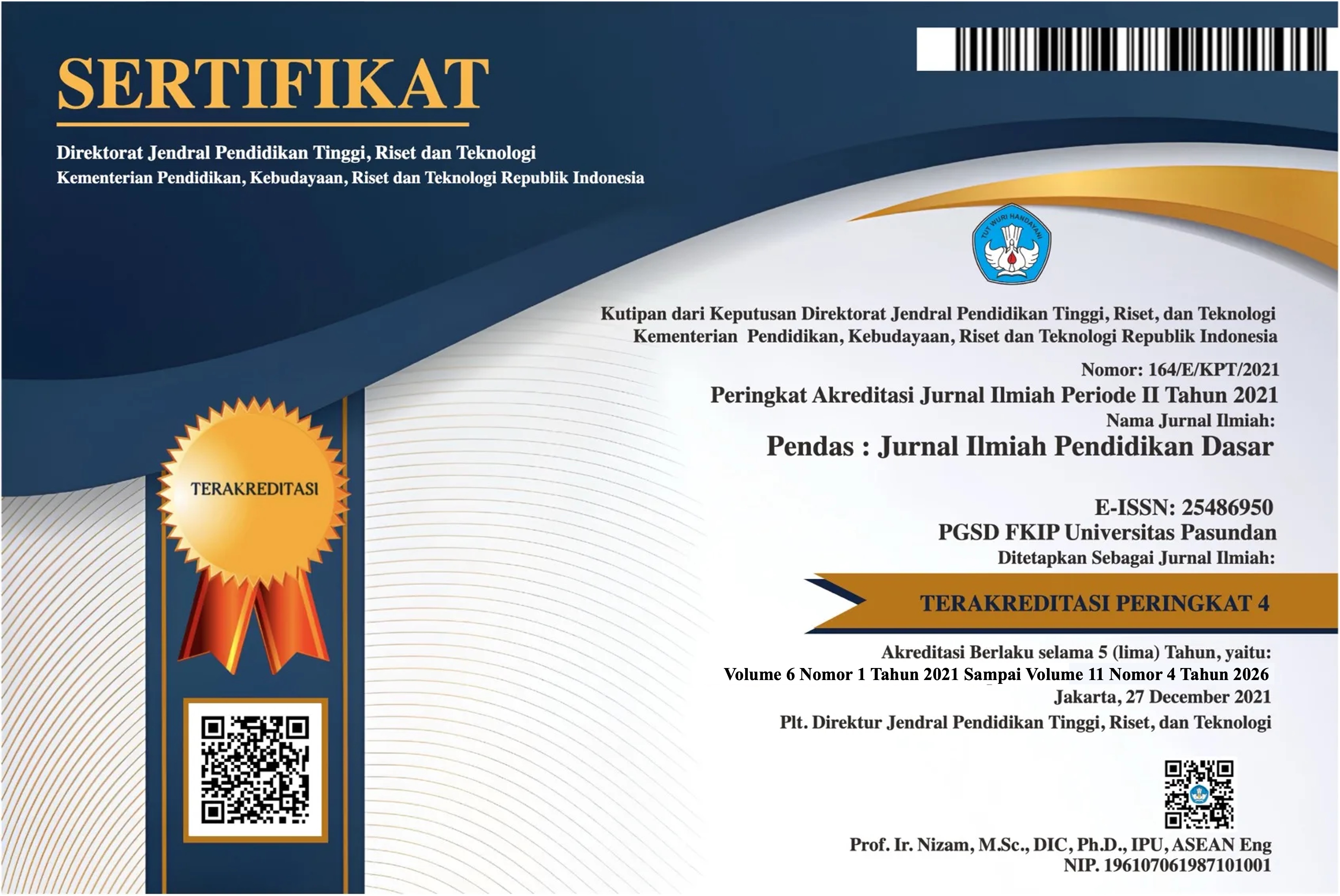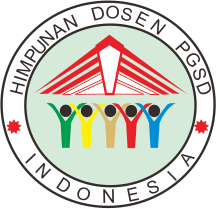Pengembangan Multimedia Interaktif Berbasis Aplikasi Canva dan Wordwall Pada Materi Keliling dan Luas Bangun Datar di Kelas V Sekolah Dasar
Penelitian dan Pengembangan (R&D)
DOI:
https://doi.org/10.23969/jp.v10i02.25640Keywords:
Interactive Multimedia, Canva, Wordwall, Perimeter and Area of Plane FiguresAbstract
This research is motivated by the less than optimal implementation of technology-based interactive multimedia. Teachers primarily use textbooks, concrete media, PowerPoint presentations, and simple instructional videos, leading to less engaging and monotonous learning experiences. This is due to limitations in knowledge, skills, and time for creating instructional media. This research aims to develop valid, practical, and effective interactive multimedia based on Canva and Wordwall applications. The type of research used in this study is Research and Development (R&D). The model employed is the ADDIE model, which consists of five phases: Analysis, Design, Development, Implementation, and Evaluation. Data analysis techniques include preliminary study analysis (interviews, observations, student needs analysis), validity, practicality, and effectiveness. The validity test yielded very valid results, with media validation at 100% (Very Valid), material validation at 100% (Very Valid), and language validation at 100% (Very Valid). The practicality test at the SD Negeri 05 Padang Pasir trial school, based on teacher response questionnaires, showed 100% (Very Practical), and student responses indicated 98.8% (Very Practical). The effectiveness test at the SD Negeri 15 Anduring and SD Negeri 25 Lubuk Lintah research schools, based on pre-test and post-test scores, showed an increase in learning outcomes. Thus, it can be concluded that the "Development of Interactive Multimedia Based on Canva and Wordwall Applications for Perimeter and Area of Plane Figures in Grade V of Elementary School" is very valid, very practical, and very effective for implementation in Mathematics learning on the Perimeter and Area of Plane Figures for Grade V of Elementary School.
Downloads
References
Alrehaili, E.A., & Osman, H.A. (2019). A virtual reality role-playing serious game for experiental learning. Interactive Learning Environments, 30(5), 922-935. https://doi.org/10.1080/10494820.2019. 1703008
Astri, N. K. D. (2022). Pengembangan Multimedia Interaktif Berbasis Pendekatan Kontekstual Pada Mata Pelajaran Matematika Pokok Bahasan Bangun Datar Kelas Iv Sd No. 3 Buduk Tahun Ajaran 2021/2022 (Doctoral dissertation, Universitas Pendidikan Ganesha).
Aulia, D., Firman, F., & Desyandri, D. (2023). Pengaruh Multimedia Interaktif Berbasis Canva terhadap Kemampuan Membaca Permulaan Siswa Sekolah Dasar. Alpen: Jurnal Pendidikan Dasar, 7(1), 32-41.
Kamila, Z., & Kowiyah. (2022). Pengembangan Media Pembelajaran Interaktif Berbasis Canva pada Materi Pecahan untuk Peserta didik Sekolah Dasar. Jurnal Cendekia : Jurnal Guruan Matematika, 7(1), 72–83. https://doi.org/https://doi.org/10.31004/cendekia.v7i1.1663
Kusumawati, L. D., Sugito, Nf., & Mustadi, A. (2021). Kelayakan Multimedia Pembelajaran Interaktif Dalam Memotivasi Peserta didik Belajar Matematika. Kwangsan: Jurnal Teknologi Guruan, 9(1), 31–51. https://doi.org/10.31800/jtp.kw.v9n1.p31--51
Monica, T., & Pramudiani, P. (2022). Pengembangan Multimedia Interaktif Berbasis Google Slide dalam Meningkatkan Kemampuan Berpikir Kritis Peserta didik Materi Luas Bangun Datar Kelas IV Sekolah Dasar. Jurnal Cendekia: Jurnal Guruan Matematika, 6(2), 2228-2239.
Novitasari, D. (2016). Pengaruh penggunaan multimedia interaktif terhadap kemampuan pemahaman konsep matematis siswa. FIBONACCI: Jurnal Pendidikan Matematika Dan Matematika, 2(2), 8-18.
Putri, S. A., Sukirwan, S., & Alamsyah, T. P. (2023). Pengembangan Multimedia Interaktif Berbasis Android Aplikasi Pembelajaran Bangun Datar “SIPEMBADA” untuk Siswa Kelas IV Sekolah Dasar. Autentik: Jurnal Pengembangan Pendidikan Dasar, 7(1), 96-107.
Ramadani, F., Darmansyah, D., & Desyandri, D. (2023). Studi Literatur: Peran Teknologi Bagi Pendidikan Dalam Revolusi 4.0. Jurnal IKA PGSD (Ikatan Alumni PGSD) UNARS, 12(2), 247-258.
Siregar, Budi Halomoan, dkk. (2021). Best Practice Pengembangan Media dan Bahan Ajar Digital Interaktif Berbasis Multimedia. Medan: FMIPA UNIMED
Syafriafdi, N. (2020). Menjadi Guru Hebat di Era Revolusi Industri 4.0. Yogyakarta: CV Budi Utama.
Downloads
Published
Issue
Section
License
Copyright (c) 2025 Pendas : Jurnal Ilmiah Pendidikan Dasar

This work is licensed under a Creative Commons Attribution 4.0 International License.



















